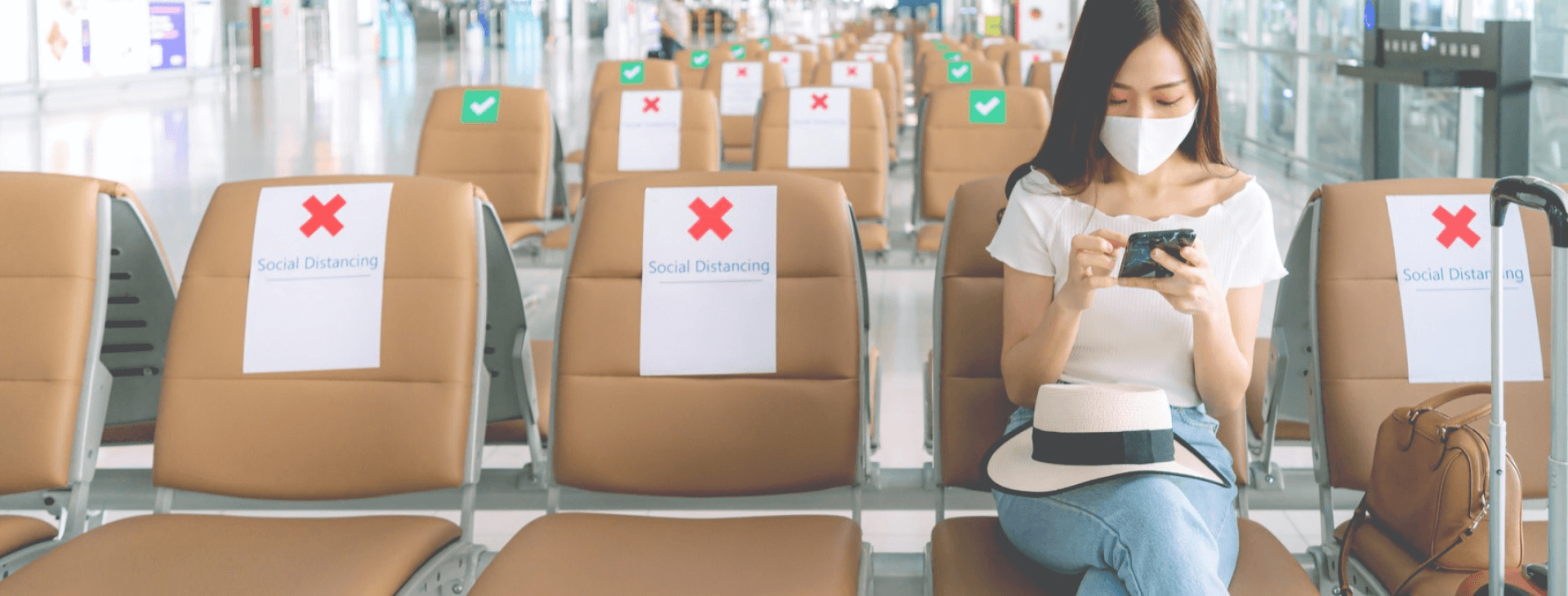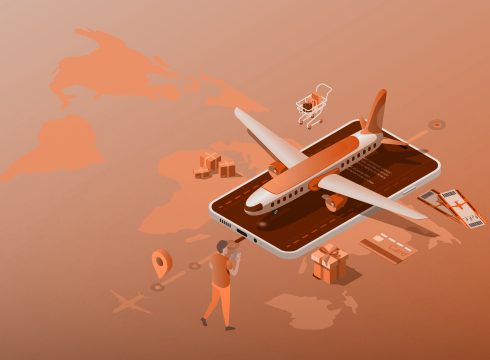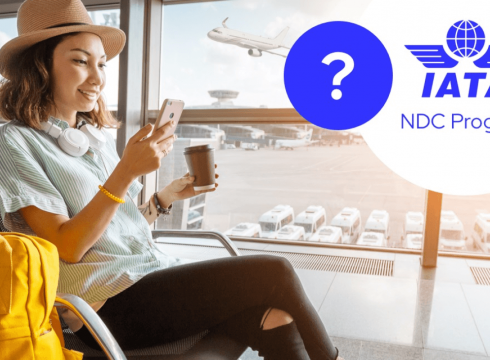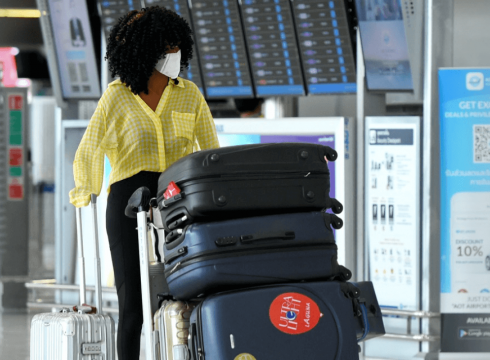The New Normal for the Airline Industry

The New Normal for the Airline Industry – The worldwide COVID-19 outbreak has had a devastating impact on many global industries. However, as a growing number of countries become increasingly confident that they have the situation under control, an easing of restrictions is enabling many sectors to reopen with minimal changes to existing operations. Some stores, for example, have introduced new queuing measures to reduce crowding, while increased use of PPE is allowing salons to continue under relatively normal conditions. But airline is different.
Until recently, the airline industry has relied upon a public willingness to spend hours in a busy terminal with travellers from all over the world, to interact with multiple airports and airline personnel throughout the screening, check-in, and boarding process, and to remain seated in a confined space from takeoff to landing. Today, willingness or not, Government regulations surrounding the use of face coverings, social distancing, and quarantine periods for travellers have rendered many once normal activities are difficult.
- So… is the airline industry doomed?
- The New Normal for the Airline Industry
- 1. A Shift in the Economic Landscape
- 2. A Heightened Awareness of Safety
- 3. Sustainability
- What Does the 'New Normal’ Look Like?
- No-Touch Passenger Processing
- Enhanced Airline eCommerce
- Virtual Support
- A ‘New Normal’: Is it Possible?
So… is the airline industry doomed?
With the International Air Transport Association (IATA) predicting a best-case $63 billion passenger revenue loss and a worst-case scenario of $113 billion, it’s easy to think that there’s no future for the airline industry. But this is from the perspective of the ‘old normal’. The downtime generated by the pandemic has formed a unique opportunity for the airline industry to rethink what ‘normal’ really means, to take a strategic look at how customer needs may change during this time, and to think about what a ‘new normal’ for airline may look like.
The New Normal for the Airline Industry
Envisioning a ‘new normal’ for the airline industry means first considering what needs to change as a direct result of COVID-19. To emerge strongly in a post-Coronavirus world, airline organizations must identify the new challenges that have arisen, acknowledge how these challenges directly affect traveller behaviour, understand the gap between new expectations and existing processes, and work to bridge this gap by creating the foundations of a ‘new normal’ that breaks free from traditional orthodoxies.
So what are the new challenges being faced today?
1. A Shift in the Economic Landscape
The financial effects of COVID-19 are anticipated to be long lasting. While airlines and airports may begin to see improvements in cargo and business revenue, job losses and financial uncertainties are expected to heavily impact passenger revenue. And even in those cases where personal finances are not an influencing factor on the decision to travel for leisure, mandatory quarantines will be. According to the IATA, more than three quarters of those in France, Germany, and the UK are unwilling to travel under mandatory quarantine regulations.
2. A Heightened Awareness of Safety
Despite the IATA stating that the risk of transmission is lower on aircraft than in grocery stores, Deloitte reports that nearly 70% of people don’t feel safe flying during the pandemic. Previously, ‘safety’ within the airline industry was heavily focused on security. Today, however, travellers have a greater awareness of the health aspect of safety, too. The public have become accustomed to social distancing, to wearing masks, and to high degrees of cleanliness. And while it may not have been particularly noticeable before, airline is a remarkably high touch industry. From self-check-in screens and physical documentation to fingerprint scanning and seatbelts, all of these once normal aspects now hold the potential to increase risk and lower confidence.
3. Sustainability
At this point, it’s worth considering how sustainability will impact the creation of a ‘new normal’ for the airline industry. While countries may be able to get COVID-19 under control, the proposed seasonality of the virus may mean that it doesn’t completely disappear; that it returns in waves much like other Coronaviruses. Whatever changes that the airline industry makes now must be sustainable; these changes must be able to be implemented long term. This means that relying on subsidies or financial aid to create a new normal isn’t going to cut it. It is clear that the industry needs to do more while spending less, and for many airlines and airports, this could mean taking a closer look at operational efficiencies.
What Does the ‘New Normal’ Look Like?
The truth is that, right now, no one can say with any certainty exactly what a new normal will look like for the airline industry. What is clear, however, is that identifying solutions to resolve the concerns discussed above will likely play a major role in building the foundations for industry-wide change. There are many potential ways that the industry can address the new challenges sparked by COVID-19, but a rapidly emerging area of interest at this particular stage of recovery is simply putting customers first.
So what’s best for future customers? Is it to enforce the wearing of face coverings on 13+ hour flights? Is it to provide a small snack bag at the beginning of each journey, forgoing the usual refreshment service? Is it constantly delaying check-in processes for deep cleaning in between passengers? Of course not.
Regardless of what happens, the ‘new normal’ for the airline industry will undoubtedly be built upon the formation of a more digitized passenger experience right through from start to finish. Digitization had already started to be embraced across some aspects of the airline industry prior to the pandemic, but outdated legacy systems won’t cut it in a post-pandemic world. Research by Gartner already shows that around three quarters of digitally leading companies are failing to utilize the technology to put people first, highlighting an urgent need for the airline industry to move closer towards developing its own ecosystems, powered by a single platform, that allow businesses to meet the evolving need of travellers.
Here are just a few of the ways that digitization could shape airline’s ‘new normal’:
No-Touch Passenger Processing
The new end-to-end travel experience must facilitate social distancing and hygiene if it is to provide peace of mind to travellers that they are safe before, during, and after a flight. While passenger processing has previously been focused on speed, there is now an additional need for cleanliness. Passenger-facing technologies are expected to transition from now outdated touchscreens and face-to-face check-ins to touchless systems that interact with passengers in alternative ways.
Enhanced Airline eCommerce
Until now, airline eCommerce has primarily focused on flight bookings exclusively, with little functionality for ancillary services. That is anticipated to change under the ‘new normal’. To minimize unnecessary face-to-face contact at the airport and lower rates of transmission, passengers can expect an enhanced airline eCommerce experience in the future, with the ability to manage all aspects of the journey – including legroom, meal options, transfers, and car rental – all from a single online platform.
Virtual Support
Passengers need to have confidence that any questions they have regarding their travel plans – even while at the airport – will be answered. However, it is likely that passengers may also have a reluctance to engage in face-to-face conversations. Virtual support could prove to be an effective solution here. The ‘New Normal’ may involve greater use of virtual assistants such as Siri or Google Assistant, and real-time translation services offering multi-language options are expected to rise in popularity significantly.
The problem with this form of ‘new normal’, however, is that these socially-distanced measures must be implemented while simultaneously offering a personalized flight experience for passengers.
Personalization of services is key to engaging with the new generation of traveller and building loyalty, so how can businesses operating within the airline industry combine the growing need for more self-service travel options with the existing need for personalization? The answer lies in greater collaboration and the formation of new partnerships with leading digital providers offering tailored solutions that pave the way for the creation of a new and safe post-COVID-19 airline industry.
A ‘New Normal’: Is it Possible?
What is important to remember is that there has never been a ‘normal’ in the airline industry. At least, not for long. Once upon a time, passengers boarded planes wearing suits and ties, with air travel considered to be one of life’s greatest luxuries. Then came the widespread accessibility of flying. Following that, 9/11 transformed the industry massively. And each time, airlines, airports, staff, and passengers have adapted to the changes, as they will this time, the next time, and the time after that.
‘New normals’ are really just short term states of normalcy, with each state determined by the at-the-minute needs, preferences, and expectations of travellers. The next state of normalcy, sparked by the COVID-19 outbreak, is when airline digitization is really expected to take off, generating a new technology-driven landscape that ensures flying remains safe, secure, and most importantly enjoyable.
- So… is the airline industry doomed?
- The New Normal for the Airline Industry
- 1. A Shift in the Economic Landscape
- 2. A Heightened Awareness of Safety
- 3. Sustainability
- What Does the 'New Normal’ Look Like?
- No-Touch Passenger Processing
- Enhanced Airline eCommerce
- Virtual Support
- A ‘New Normal’: Is it Possible?




